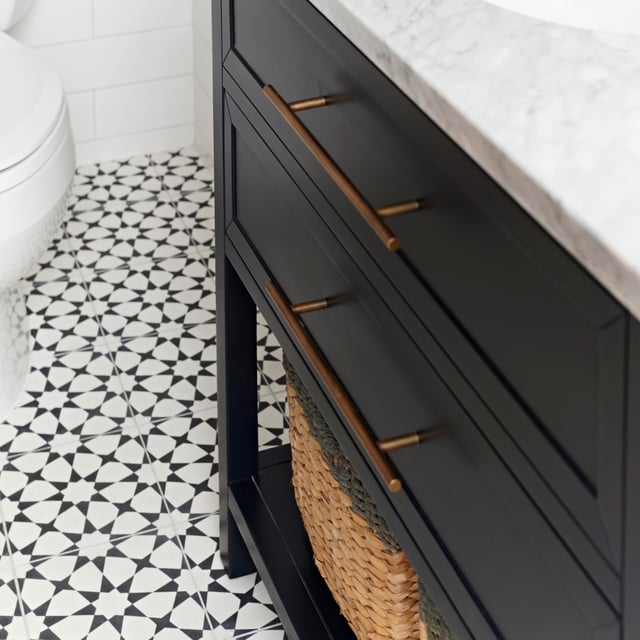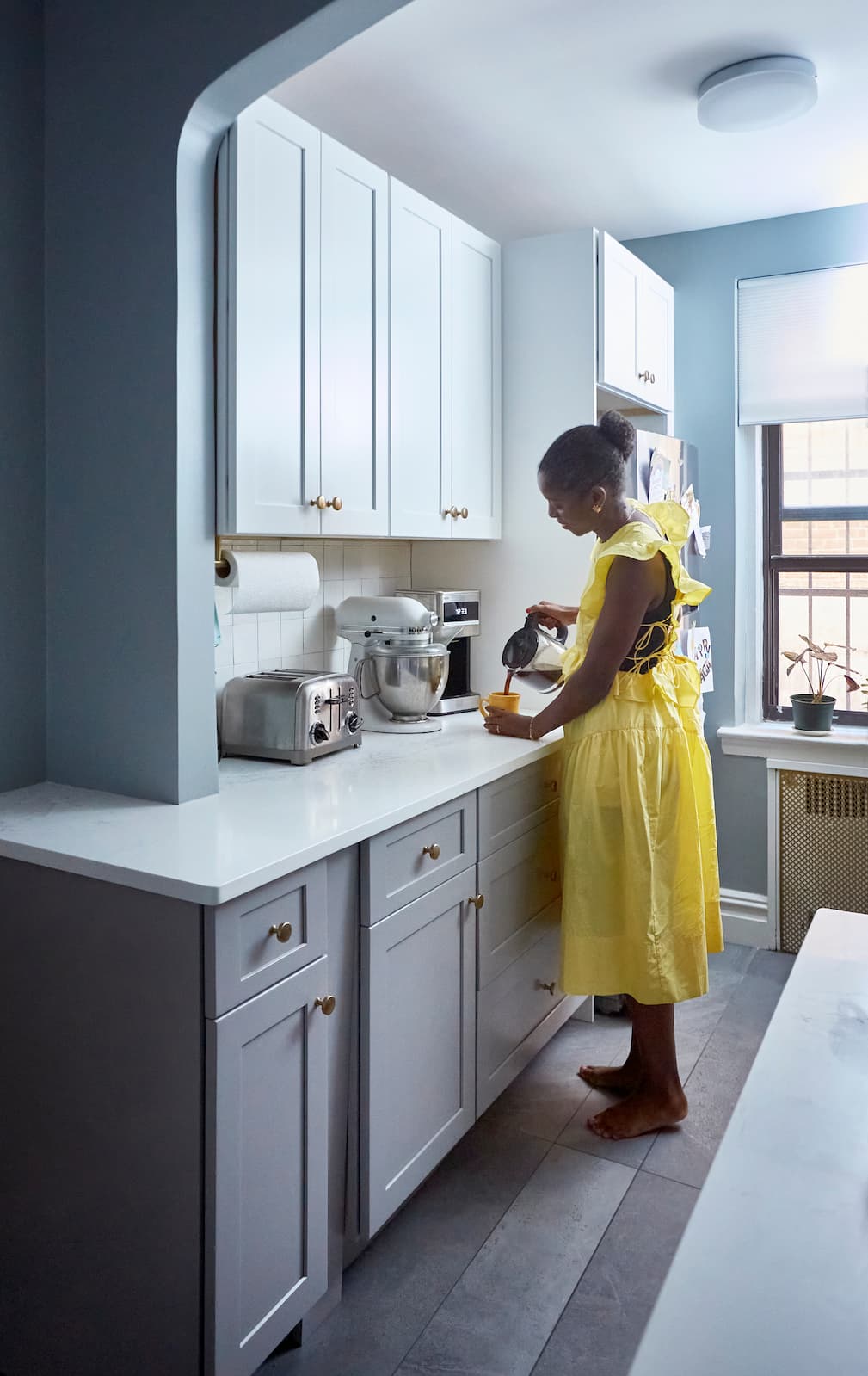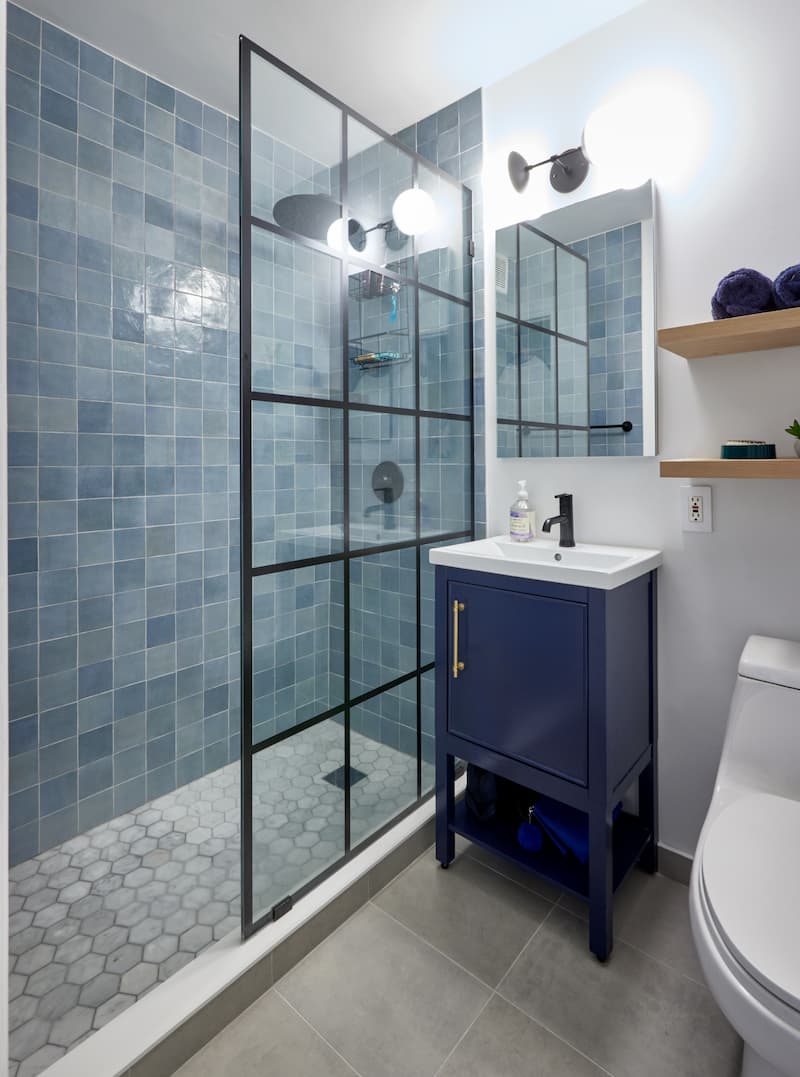Vinyl Flooring in the Bathroom: Pros, Cons, and What to Know Before Committing

In This Article
The right bathroom floor has to do more than just look good—it needs to stand up to splashes, steam, and everyday wear. That’s why vinyl flooring has become a go-to for many homeowners. It’s durable, easy to maintain, and offers serious style at a lower price point. But like any material, it comes with trade-offs. Here’s a closer look at what vinyl can—and can’t—do in a bathroom, so you can decide if it’s the right fit for your space.
The Pros of Vinyl Flooring for Your Bathroom
- Water Resistance: Vinyl is designed to handle moisture, making it a smart choice for bathrooms where spills and splashes are part of daily life. You won’t have to worry about water seeping through and causing damage underneath. While this feature makes it practical for nearly any bathroom, it's particularly suitable for households with kids or for lower maintenance homeowners.
For related insights, read Bathroom Waterproofing—Floors, Walls & More.
- Comfort: Unlike tile, vinyl feels softer and warmer when you step out of the shower.
- Easy Maintenance: Cleaning vinyl bathroom flooring is a breeze. A quick sweep and an occasional mop are usually all it takes to keep your bathroom looking fresh. There’s no need for special cleaners or complicated routines.
- Budget-Friendly: Vinyl offers the look of more expensive materials—like wood or stone—without the hefty price tag. It’s a great way to refresh your bathroom without breaking the bank.
- Style Variety: From classic marble to bold patterns, vinyl comes in a huge range of colors and designs. You can easily find a look that matches your personal style or the vibe you want for your bathroom.
- Quick Installation: Vinyl flooring can often be installed faster than other options, which means less downtime for your bathroom. Many types are designed for easy, efficient installation by a professional.
The Cons of Vinyl Flooring for Your Bathroom
- Susceptible to Damage: While vinyl is tough, it can be scratched or dented by sharp objects or heavy furniture. Dropping something heavy or dragging a vanity across the floor can leave a mark.
- Not as Long-Lasting as Tile: Vinyl generally doesn’t have the decades-long lifespan of ceramic or porcelain tile. Over time, it may show signs of wear, especially in high-traffic bathrooms.
- Seam Issues: In bathrooms with a lot of water, seams between vinyl planks or tiles can sometimes let moisture through if not installed perfectly. This is why professional installation is so important.
- Can Be Difficult to Repair: If a section of vinyl gets damaged, it’s not always easy to fix just that spot. In some cases, you may need to replace a larger area to keep things looking seamless.
- Potential for Fading: Vinyl can fade over time if your bathroom gets a lot of direct sunlight. Window coverings or choosing a fade-resistant product can help, but it’s something to keep in mind.
Perfect Every Detail of Your Bathroom

Vinyl Tiles vs. Vinyl Planks
When it comes to vinyl flooring, you’ll typically choose between two main formats: vinyl tiles and vinyl planks. Both offer the same water resistance and easy maintenance, but each brings its own style and practical benefits to your bathroom.
Vinyl tiles are often designed to mimic the look of ceramic or stone, making them a great choice if you love the classic, grid-like appearance of traditional bathroom floors. They’re especially handy for smaller bathrooms or for creating custom patterns, like checkerboards or mosaics. If a tile gets damaged, it’s usually easy to replace just that piece, which can be a real advantage in high-traffic bathrooms.
Vinyl planks are made to resemble hardwood, offering a longer, linear look that can make your bathroom feel larger and more open. Planks are perfect if you want to bring a touch of warmth and natural texture to your space—without worrying about water damage that real wood can’t handle. They’re also a great fit for larger bathrooms or for creating a seamless flow into adjoining rooms with wood-look flooring.
How Vinyl Compares to Other Bathroom Flooring Options
When weighing your bathroom flooring options, it’s important to see how vinyl measures up against other popular materials like tile, natural stone, and engineered wood. Each has its strengths, but vinyl brings a unique mix of comfort, affordability, and practicality to the table.
Tile (ceramic or porcelain) is often considered the classic choice for bathrooms, thanks to its exceptional durability and water resistance. It stands up to heavy foot traffic and shrugs off scratches and dents, making it a long-lasting solution for busy households. However, compared to vinyl, tile can feel much colder and harder underfoot—something you’ll notice on chilly mornings. Tile installation is also more labor-intensive and expensive, and grout lines need regular cleaning to keep them looking fresh. Vinyl, on the other hand, offers a warmer, softer feel and is much easier and quicker to install, with minimal maintenance required.
Natural stone—like marble, slate, or travertine—brings undeniable luxury and elegance to a bathroom. Stone floors are incredibly durable and can last for decades, but they come with a significantly higher price tag than vinyl, both for materials and installation. Stone can also be slippery when wet and usually needs to be sealed to prevent moisture damage. While vinyl can mimic the look of natural stone at a fraction of the cost, it’s also more comfortable underfoot and far less demanding when it comes to upkeep. For most homeowners, vinyl delivers the style of stone without the high maintenance or investment.
Engineered wood gives you the inviting look and warmth of real wood, which can make a bathroom feel especially cozy. However, even though it’s more stable than solid hardwood, engineered wood still doesn’t match vinyl’s water resistance. Bathrooms are high-moisture environments, and engineered wood can warp or swell if exposed to water over time. It’s also pricier than vinyl and requires more careful maintenance to avoid damage. Vinyl flooring, by contrast, is designed to handle splashes and humidity with ease, making it a more practical and worry-free choice for most bathrooms. For more insights into this particular option, read What You Need to Know Before Installing Wood Flooring in a Bathroom.
Tips for Styling Your Vinyl Bathroom Flooring
- Go bold with patterns: Choose vinyl in geometric or graphic prints for a modern, eye-catching statement. Patterns can add energy and personality to even the smallest bathrooms.
- Embrace wood-look vinyl: Opt for vinyl that mimics natural wood to bring warmth and a spa-like feel to your space. This is a great way to get the cozy look of wood without worrying about water damage.
- Play with color contrasts: Pair light-colored vinyl floors with bright towels, shower curtains, or accessories for a fresh, airy vibe. Lighter floors can make your bathroom feel bigger and more open.
- Create drama with dark tones: Darker vinyl flooring can add depth and a touch of luxury to your bathroom. Pair with metallic fixtures or jewel-toned accents for a sophisticated, moody look.
- Layer in texture: Add a plush bath mat or textured rugs for comfort and visual interest. Soft textiles not only feel great underfoot but also help break up the look of the floor.
- Mix and match styles: Don’t be afraid to combine different patterns or finishes on your floor and walls. Mixing subway tile with patterned vinyl, for example, can create a playful, custom look.
Bring Your Dream Bathroom to Life

Get Expert Help to Choose the Right Flooring for Your Bathroom
With so many options and details to consider, working with a professional contractor is the best way to ensure your bathroom flooring is installed perfectly and built to last, whether it’s made from vinyl or not.
An experienced pro can help you choose the right type of vinyl, handle tricky layouts, and make sure seams are sealed tight—so you get all the benefits without the headaches. Plus, you’ll have peace of mind knowing your new floor is ready to handle whatever your bathroom throws its way.

Written by Block Renovation
Frequently Asked Questions
How long does vinyl flooring last in a bathroom?
Can vinyl flooring go over existing tile?
Is vinyl flooring safe for bathrooms with radiant heat?
How do I clean and maintain vinyl bathroom flooring?

Renovate confidently with Block
Easily compare quotes from top quality contractors, and get peace of mind with warranty & price protections.
Thousands of homeowners have renovated with Block

4.5 Stars (100+)

4.7 Stars (100+)

4.5 Stars (75+)
Renovate confidently
- Top quality contractors
- Warranty & price protections
- Expert resources

